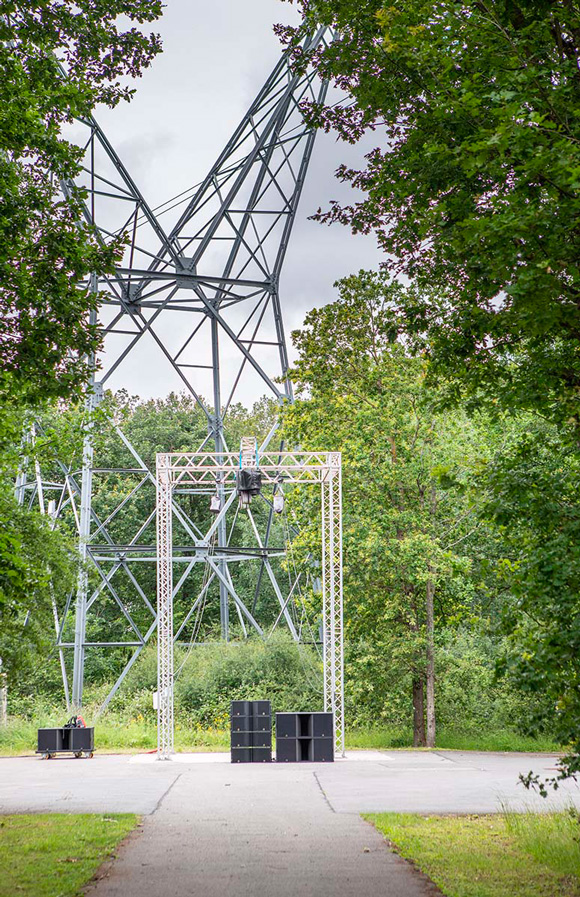Launched in September 2020, K3 has been described by Florent Bernard, L-Acoustics’ Applications Manager, as “a system that combines performance, throw range and full-range capability in a compact and affordable package, designed for small- to medium-sized events and venues, which represent the core business of most sound companies”.
A year later, thanks to the cooperation of Germain Simon and Fred Bailly, we finally get to spend a day in Marcoussis to see it up close, take a look at its accessories and, above all, listen to it. Germain gets the opening round of questions.

SLU : What led you to develop K3?
Germain Simon : L-Acoustics tries not to introduce too many products, but to offer versatile models that can fully satisfy specific requirements, for example in terms of size or speed of deployment. The idea behind K3 is to build a K series that is consistent but at the same time responds to a number of specific needs in the field.
K1 and K2 are known for their large and very large application capabilities. They are able to reproduce the full frequency range and can deliver real bass, even without subs. On the other hand, Kara II and Kiva II are compact systems that also comply with WST rules and offer advantages in terms of size, weight and range, but with lower SPL and bandwidth.
So there was a missing link; there was a demand for a system that could cover a fairly specific segment of the market at a particular price-point. This is how K3 came to be, positioned between the two full range models and the two compact ones, although K3 is part of the full-range family, but with a reduced size.
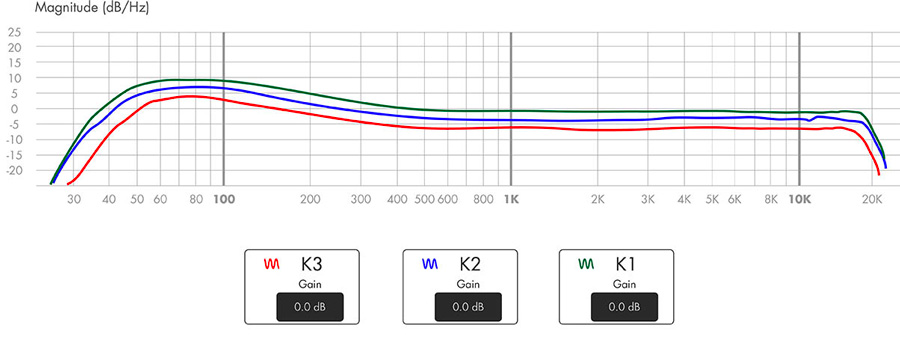
SLU : How full-range is it?
Germain Simon : It is a bi-amplified enclosure with a frequency response very close to that of K2 or K1, and with the same contour as those of its two bigger brothers, which was very important to us. It was necessary that this model, deployed as a main system or, for example, as an outfill, have a very similar sound image. When we compare arrays of four K3, K2 and K1 modules with an identical line curvature, the pivot point is at 400 Hz and we notice that, within a few Hz, the contour is the same.
SLU : How many modules does it take to raise the pivot point to 1 kHz?
Germain Simon : You would need 12. This is a conventional parameter that is still used when designing speakers. K3 is thus a full-range box that delivers a maximum SPL of 143 dB at 70°, with a crest factor of 4, that is to say at +12 dB. This is 4 dB less than K2 and 6 dB less than K1.
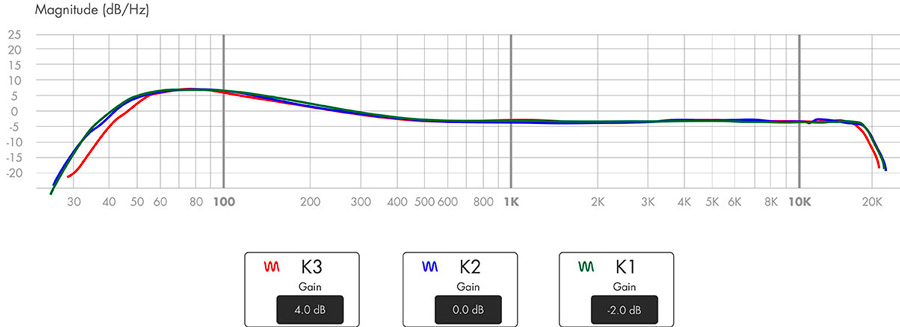
SLU : K3 works without any bass reinforcement in the line…
Germain Simon : Exactly. While Kara II needs to have an additional 18″ woofer in the array or next to it, K3 offers a complete solution that’s simpler and faster to implement, lighter, requiring fewer amp channels, is less visually obtrusive and, ultimately, less expensive. It’s a super-rationalized system.
SLU : What makes K3 lighter?
Germain Simon : Compared to K2 there is only one driver, it lacks the four 6.5″ midrange components, and the cabinet is not as wide. Also, as with K2, we worked on the thickness of the wood and removed some material where the pressure and the constraints are lower. K3 is 13 kg lighter than K2.

SLU : L-Vent, Panflex…
Germain Simon : We couldn’t do it without them. The laminar vent alone increased the efficiency of the KS28 by 4 dB and was already present on the K2, from which we adopted the curved sides for the K3.
The fins are now indispensable, because with a single speaker you can have four different coverage angles.
The combination of the fins, the low cutoff frequency of the driver and the preset provides effective directivity control down to 300 Hz. To go even lower would require enlarging the baffle and the fins. There are three presets: 70°, 90° (asymmetric) and 110°.
SLU : How did you manage to reconcile SPL and wide bandwidth?
Germain Simon : That’s what K3 is all about: full range without sacrificing SPL, but knowing that extending the bandwidth influences the sensitivity of the speaker. There is a very fine line to walk regarding the choice of components, volume and load configuration and, of course, the presets.
The dispersion also plays a role because between 70° and 110° there is a 2 dB difference. We have referenced the equivalent products designed for the same market, and K3 is in the lead, thanks to the balance between its performance and its price.

SLU : The 4″ high frequency driver is the star feature of this enclosure. Does it manage to deliver high frequencies? A few years ago the manufacturers of these large transducers were struggling…
Germain Simon : We’re getting there, you’ll be listening to it with Fredo (Bailly) in a few minutes. We don’t claim that K3 can project the high end as far as K2 can – if only because we don’t have the same number of drivers in the same length of array – but we had an industrial choice to make for K3 in terms of size, weight, and price, and the 4″ driver does a great job. You get the performance you want for the price you set.

SLU : This choice is crucial for this enclosure. This is your first 4″. How do you do it…
Germain Simon : We specify our needs and our transducer suppliers make us proposals, sometimes by modifying existing models, sometimes by developing them from scratch. We work a lot with them to get exactly what we want and we do a lot of listening.
The department that both Frédéric Bailly and I belong to is important, because, during the time required to develop K3 – a little more than two years – there were very long listening phases during which we compared the products, the assemblies, the woodwork and so on.

SLU : You are putting a lot of octaves in the hands of this transducer!
Germain Simon : Yes, and I’m personally very impressed with the coherence of K3; having only two channels helps, even though we also have control of four channels, but especially in terms of the quality of voice reproduction.
We listened a lot to K2 and K3 and the very large Panflex fins project them perfectly. A singer’s voice goes almost entirely through the driver and it sounds great. They say “The best sound comes from a single source,” and it’s much easier to manage (laughs).
SLU : There is not much difference in SPL between Kara II and K3.
Germain Simon : No, in fact, the 3″ driver in Kara II is also very, very powerful, and if we look at the whole power range, we don’t see a big difference in pressure between the two cabinets (1 dB SPL). On the other hand, K3 has a contour that Kara II does not have. That said, it’s not what we were looking for. We positioned K3 as a full-range system. We could have gained 2 to 3 dB of SPL, but we would have lost 15 Hz.
SLU : The K3 preset is responsible for some of the high end of the K3?
Germain Simon : The more you solicit electronically from the high end, the more you lose in terms of sensitivity, and that’s not what you want. An array of K2s, but also of Kara IIs, will have a kind of brilliance at a distance that K3 does not have, as it is designed to throw up to 60 meters, at which point it loses some of its brightness.
SLU : Does the version for permanent installations differ acoustically?
Germain Simon : No, none at all, it just uses a much simpler and more discreet system for suspending the speakers on their frame (which itself is also simpler), connections via a terminal block with a cable gland for outdoor use. The idea of screens on the front of the K3 series was borrowed from the A Series, which, together with the RAL finish program, offers considerable flexibility for integration. There have even been some very nice video projections made on A Series cabinets with screens, where the speakers were completely unnoticeable.
SLU : What audience size is K3 intended for?
Germain Simon : From 1,000 to 10,000 people. Beyond that, you should move up to K2 or K1. For smaller capacities, there are much more rational solutions such as A15, or Kara II with variable curvature. K3 can still be used in a stadium in a distributed system.


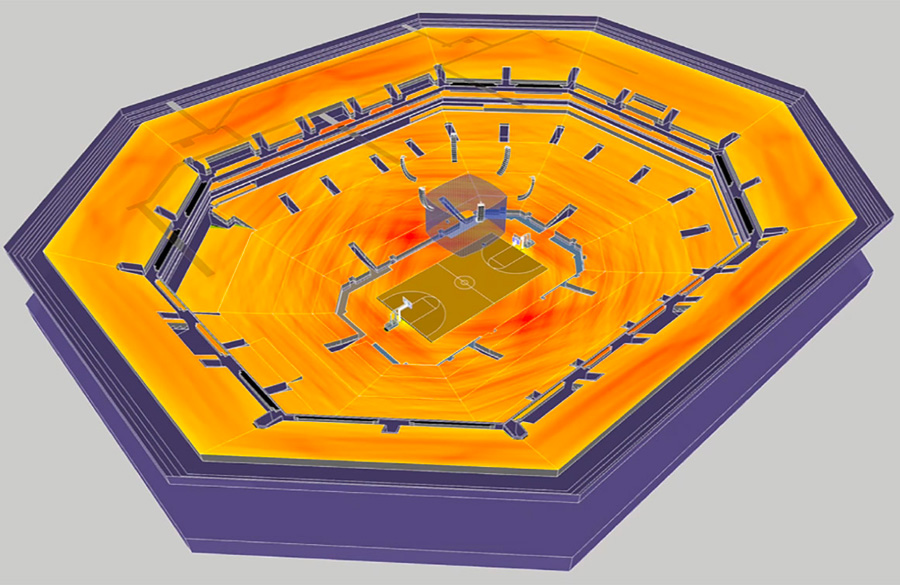

SLU : What is needed for a typical 6,000-seat sports arena, such as the Zénith in Paris?

Germain Simon : The Zénith was precisely what we had in mind when we designed K3 (laughs). You would typically need a kit with 12 K3s per side and eight KS28s. The whole thing can be run on two LA-RAK II AVB racks, one for the left and one for the right, and the same goes for the accessories.
A lot of streamlining has been done to further simplify and accelerate the deployment of this system, as well as its handling and transportation.
This configuration of 24 heads, eight subs and two racks of controllers also serves as the prerequisite for our partners to be listed as KX partners for K3, and to benefit from cross rental.
The accessories
After this conceptual introduction by Germain, Fred Bailly and Laurent Lagreve show us the many accessories and clever solutions that have been developed to make the handling and operation of K3 as quick and safe as possible.
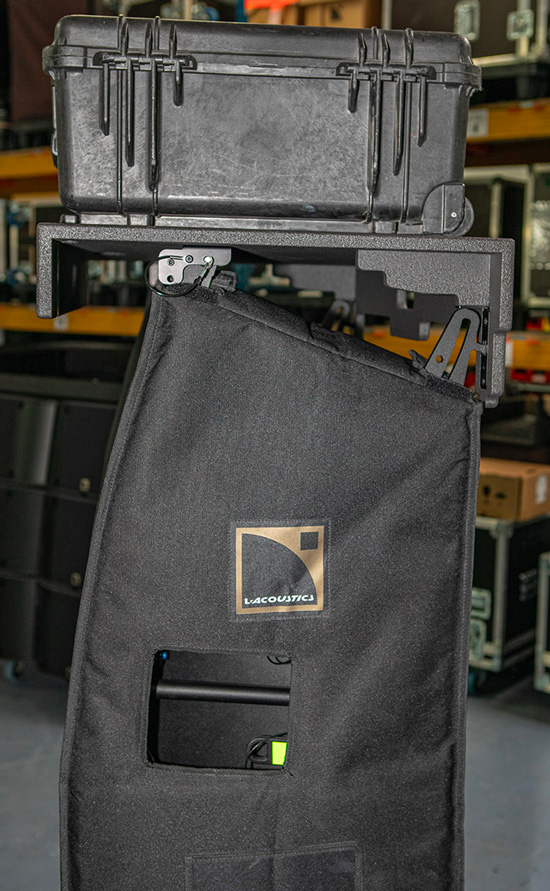
As Fred points out, some of the accessories are simply the transposition into “real life” of a request, a wish, sometimes from a large international sound company.
The variety of accessories is so vast that we will only mention a few of them, but congratulations to the metal, wood and textile R&D team, it’s better than Lego and Meccano combined!
The 4-box dolly (and support for building up 6-box floor stacks with jacks) that comes with the system, can be completed with a lid that is capable of supporting 400 kg and is fixed flat to the top rigging hardware of the top K3 on the dolly.
To do this, the fabric cover for the four speakers has openings at the top through which the rigging arms can pass.
These four openings can be closed with strong Velcro fasteners to maintain the required waterproofing for outdoor use. All you have to do is to retract the rigging arms. Once the boxes are flown, the protective lid is attached to the dolly. Of course, the cover has the same fabric catches to prevent it from tipping backwards when used outdoors.
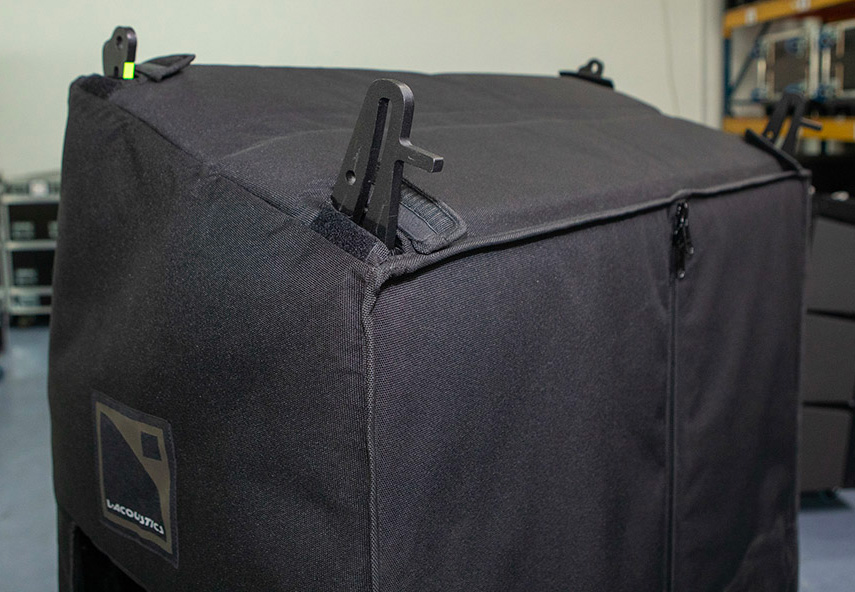
Another new feature is the double locking of the grills. “We’ve had one fall and it’s quite a heavy piece, so we decided to add a safety feature that holds the grill in place in the form of a lock, even if the screw is missing.”


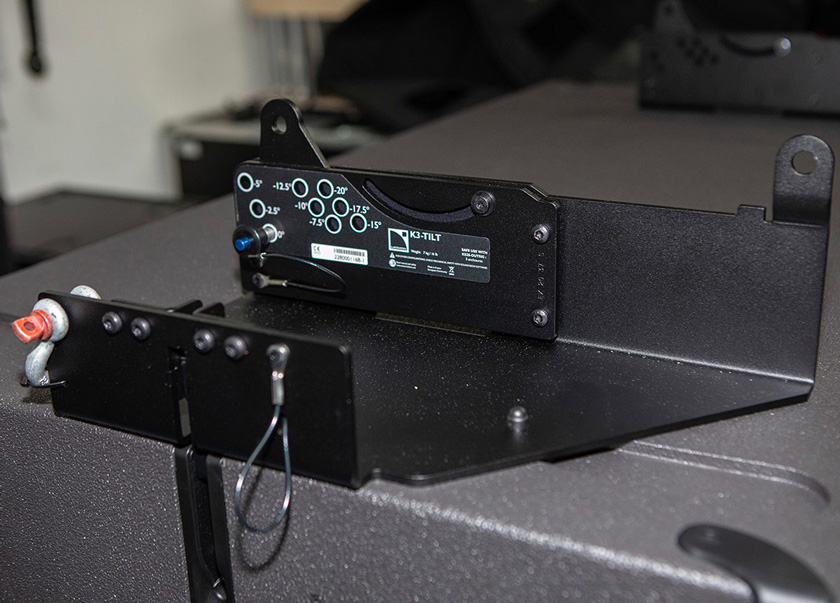
Fred Bailly : We have also developed two brackets called K3-TILT that allow stacks of K3 units to be mounted atop KS28s on the ground and directed at the audience as needed. This bracket exploits the slot of the KS28 and also its rigging arm to lock it in place.
Before mounting the first K3 module, the subs are stabilized using two rails called KS28-OUTRIG, one on each side.
We recommend that, in Safe mode, you stack only five speakers using the rails, with the sub counting the as a K3, but you can go up to a maximum of eight by stacking four heads on four subs. It is therefore imperative to properly stabilize the bottom sub.


Fred Bailly : On a développé enfin le K3-BUMPFLIGHT qui reprend l’idée des flight-cases pour K1 et K2 si ce n’est qu’on a cette fois-ci structuré son emport et sa taille pour lui permettre, via des encastrements et des étages, de fournir tous les éléments pour un système. On y trouve notamment le K3-BUMP, les K3-BAR, le DELTA et un espace pour les chaînes.

On the bottom level you have the KARA-DOWNK3, the K3-RIGBAR, the two K3-TILTs, while on the sides are the two OUTRIGs and space for shackles and chains. LA-RAKMOUNT can also be carried. Two Bumpflights can be stacked in the truck, you just need some muscle to do it.
Fred Bailly : And one last thing: the K2-LASERMOUNT for the inclinometer, which is the same as the one for the K2 because the sides are identical on both speakers. This is indispensable when you are not using the Bumper but only the Rigbar, and you have to hang it from the first box.
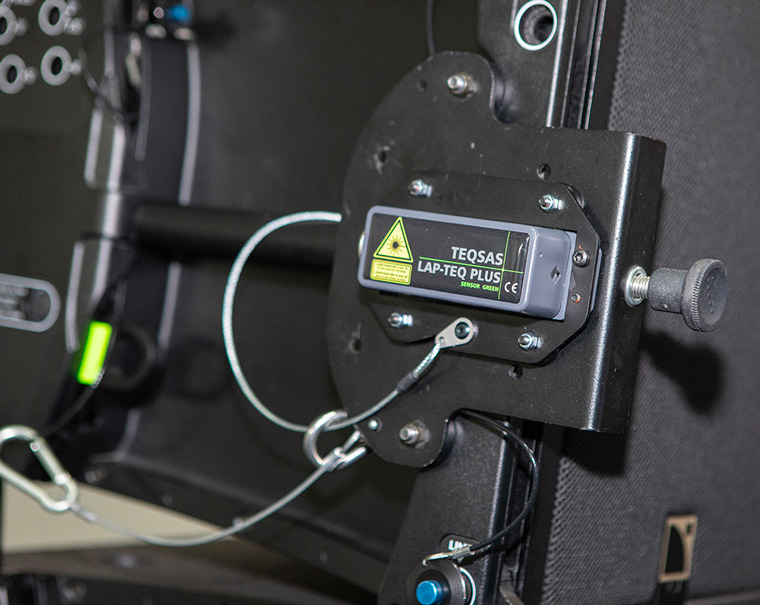
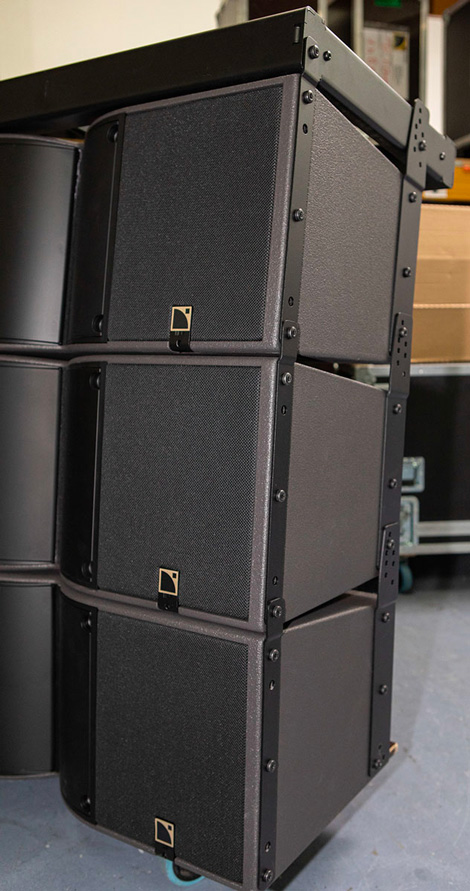
We can’t help ourselves, we take a look at some K3i modules, where the absence of mechanics creates a very sleek look, as well as the equally discrete bumper. The only part that is slightly more complex is the piece that allows you to adjust the angles with a bolt.
Listening to K3
Fred Bailly finally takes us for a walk in the famous “Forest of the Screaming Beauties” next to the L-Acoustics headquarters and, as usual, at the foot of the high-tension transmission pylon we find some speakers ready to roar: four K3 heads and a pair of KS28 subs.
We get to know each other and ask some final questions before playing the first tracks.
Fred Bailly : The difference between K3 and K2 is that K3 uses only two channels of amplification since the 12″ speakers are 16 ohm components and work in parallel, while the second channel drives the 4″ driver.
In K2, on the other hand, the 12″ units are 8 ohms each, and take up one channel of amplification, the four 6.5″ transducers occupy the third channel, and the two 3″ drivers occupy the fourth.
This makes it possible to drive up to six K3 units with the LA12X at 2.7 ohms, whereas only three K2s can be driven at the same impedance. We can also run up to four K3s on the LA4X.

SLU : The woodwork and mechanics are very similar to K2, but without the four 6.5″ mid-range components…
Fred Bailly : The mechanics are identical to those of the K2 – why change something that works very well? Externally, the dimensions of the two boxes are identical; the height, the depth and even the side panels are the same. What changes is the width, which is barely more than that of Kara and much less than that of K2. For the record, K2 could have been a little less wide but we wanted it to be mechanically compatible with K1 and this relatively large size allowed us to properly scale the ports and reduce turbulence noise; among other advantages!
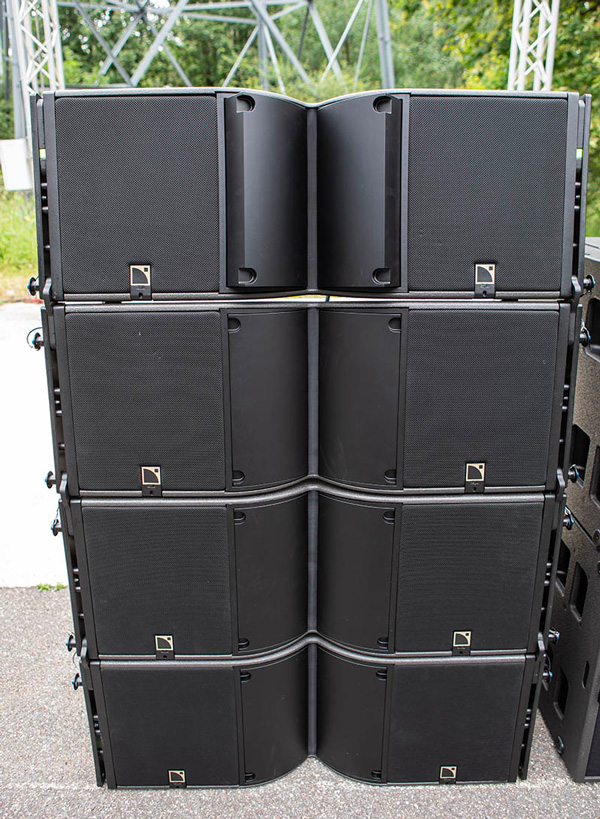
SLU : Therefore, we are talking about 2-way system. The role of the L-Fins is therefore more important because their mechanical impact starts at a lower frequency…
Fred Bailly : We have benefited from the work done for the A Series, which is also a 2-way system, with one difference: this is the first time we have adopted a 4″ driver, which is furthermore cut at 500 Hz. Until now we hadn’t gone above 3″.
SLU : The subwoofer for this listening session is the KS28.
Fred Bailly : Yes, and the amplified controller is LA12X, as LA8 and SB28 have been officially discontinued. K3 and KS28 work very well together with the crossover filtering centered at 60 Hz.
The only difference is a slightly lower crossover point than with K2, but it already has plenty of energy at the low end. The intention is to push the majority of the bandwidth through the line array. We have systems that go down to 35 Hz, which is not by chance.
SLU : If you want to get that energy into the line array, don’t you hit the low-band limiters too quickly?
Germain Simon : You can, without touching the cutoff frequency, decrease the contour using the Network Manager tools like LFC in order to recover some dynamics.
Hush now, birds… it’s time for the plywood to sing!
The listening session is organized, as is customary in Marcoussis, with the stacks placed on the ground and the possibility for the listener to circle around the speakers. Metal studs, flush with the pavement, indicate the angle at which you are situated in relation to the enclosures. Likewise, markers on the access path to the listening point allow you to know exactly how far away you are from the speakers.
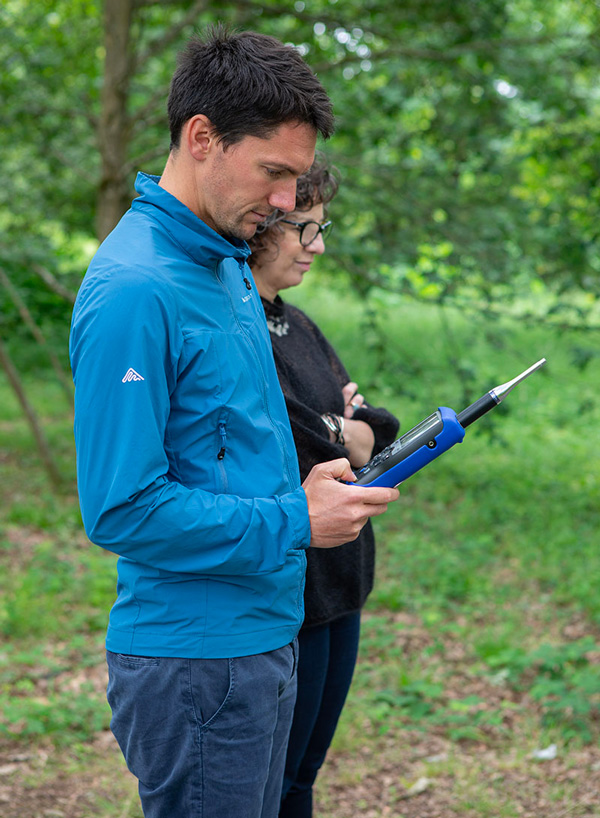
The excerpts of the proposed tracks are played in summed mono, which for some of them (fortunately very few) leads to a certain amount of cancellation and a slightly muted sound. The listening is conducted by Fred Bailly, first the heads by themselves, then with the subs.
The first impression is positive, and it exhibits a family tone. It is direct, precise, defined, with solid clarity and a reassuring fidelity. The substance, including the extreme treble, is there. The songs are quite well known, so the references are not lacking. The promise of full-range is indeed fulfilled.
The levels may be low, but the impression is quite the contrary and we find ourselves liking these 85 dB-A that cover you from head to toe, full and enveloping dB. What needs to bang, growl, push or slam gets done. We can feel that we’re not dealing with K2, but we’re not missing anything specific, we just don’t have any reference points yet.
Fred suggests we test the coverage of the enclosures, first with the Panflex retracted to 110°.
As we move away from the central axis, we can appreciate the excellent work of the R&D. The drop is so regular that we find ourselves at 50° without being disappointed and it is only when approaching 60° (we carry out this test a few meters from the enclosures) that we feel an imbalance between the omnidirectional bass and the rest of the spectrum. It is sufficient to return to 50° to recover some life and validate the 110°. Of course, there is a little lack of volume in the highs at the edges, but there are no dips or bumps in the response and one can still enjoy the sound.
We then start to listen to the 70° mode with the help of a fairly repetitive track and, since the boxes gain 2 dB in this configuration, Fred suggests that we turn the system down by that much to be able to compare 110° with 70°. After eight loud clacks, the fin pairs are pulled out. Now we’ re not dealing with the same enclosure.
Out to 30°, we get sound with minimal off-axis attenuation, then it’s an almost vertiginous drop between 30° and 40°. The influence of Panflex, and undoubtedly that of the preset, is very significant, which is good news, because what “sticks out” is very muted, almost harmless. Mission accomplished.
Now let’s try the KS28s, and then the whole shebang
We do both at 70°. The addition of the KS28 in the 1st octave definitely reinforces the “brown-box” family resemblance and immediately gives K3 a big and very dynamic sound. I think K3 needs this sub to make its bottom end denser and fuller without bogging it down. The few hertz and dB that it lacks compared to K2 make the connection even more constructive.
We back off to 30 meters and Fred unleashes the dogs. The double stack may appear small at the end of the walkway, but it does the job and mathematically we reach the levels of the safety decrees. Remember that we only have four heads and a ground effect to deal with. We gain the last few dB by tweaking a little at the low end and we start moving back – 40 meters, 50 meters, 60 meters…

The K3 reveals more of its character and the 4″ driver shows its personality. Distortion remains surprisingly low but the low-midrange impact is more punchy, more muscular than that produced by a membrane and reminds us, for those who have been in the studio, of great listening experiences. The treble is effective and lifelike up to 50 meters, after which it begins to lose its sparkle and, at 60 meters and beyond, gradually fades.

Later in the day, a final listen to a track with a much greater dynamic range (blues-rock mixed live on half-inch tape by George Massenburg at Ocean Way – thanks to Fred for uploading it to his server) confirms our initial impressions.
K3 is definitely a faithful, incisive and dynamic enclosure that pushes without biting, with a lot of detail, and it belongs in the K family. We intend to listen to this system again in a large format, flown in an indoor venue as soon as possible, to confirm these positive first impressions.
Many thanks to those who made this article possible through their time and hospitality.
For further information, visit the L-Acoustics website



